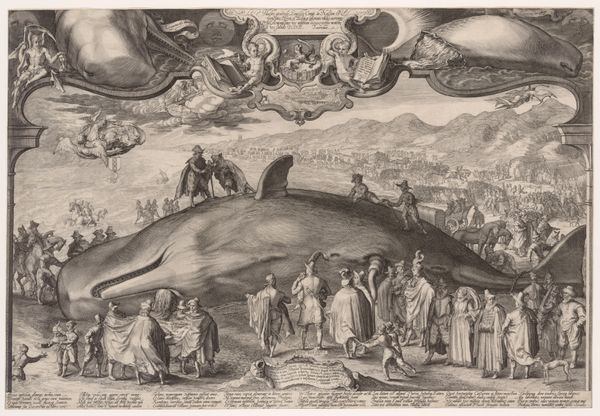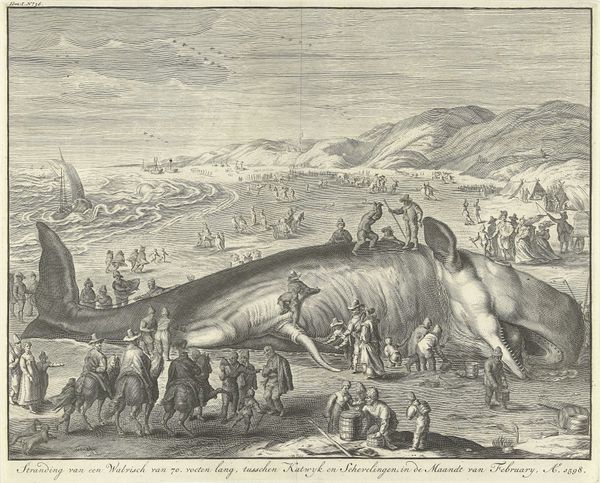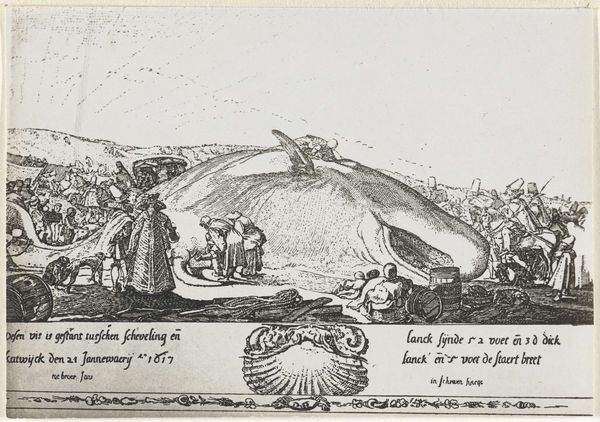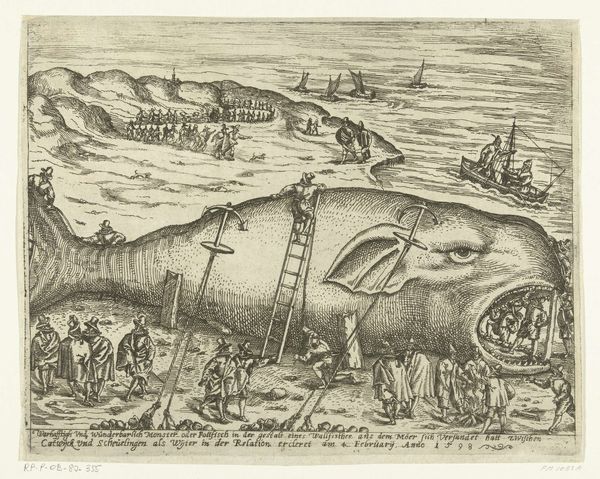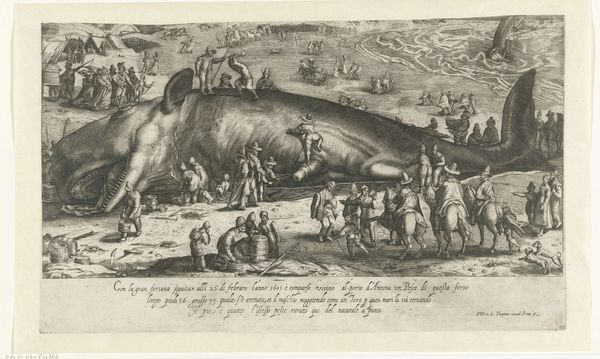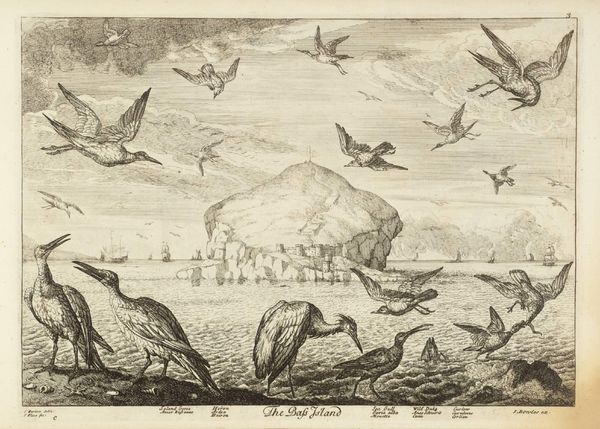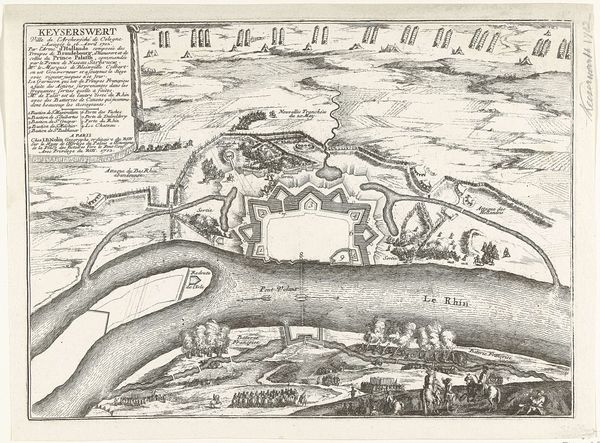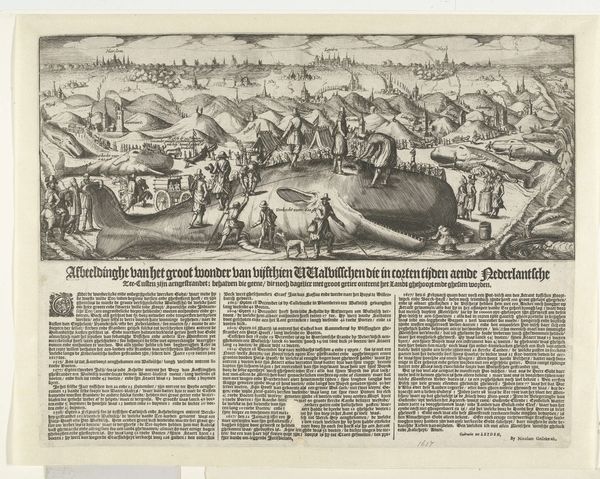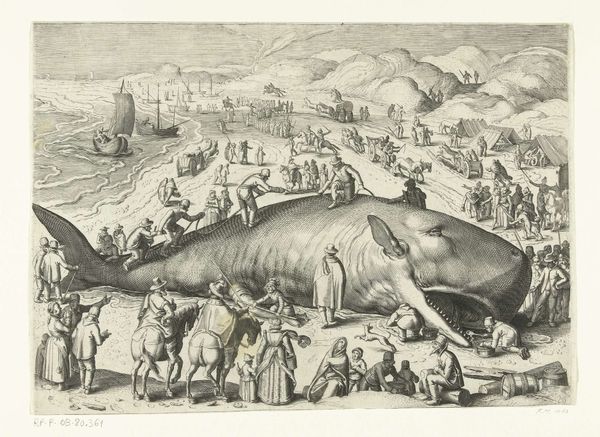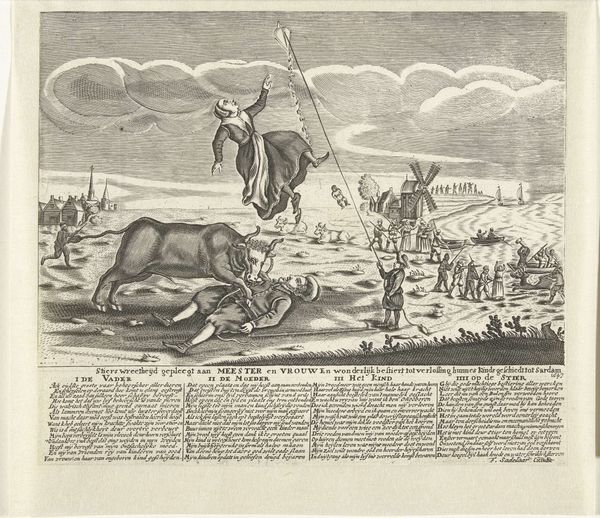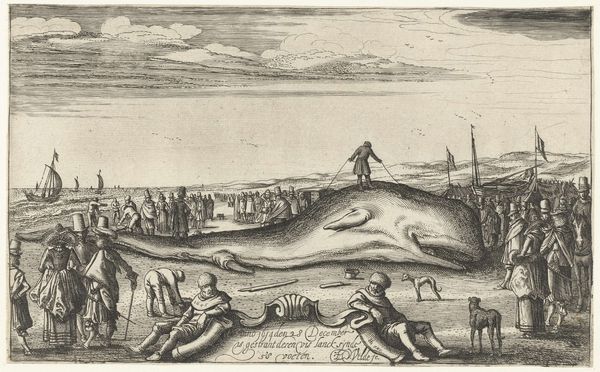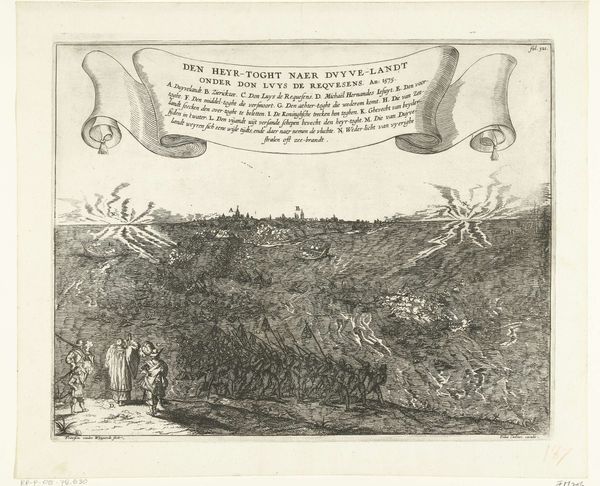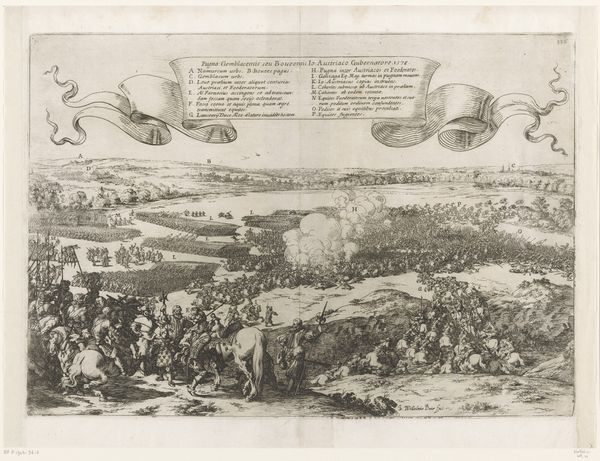
drawing, print, engraving
#
drawing
# print
#
old engraving style
#
traditional media
#
landscape
#
genre-painting
#
history-painting
#
engraving
#
realism
Dimensions: height 215 mm, width 338 mm
Copyright: Rijks Museum: Open Domain
Curator: Here at the Rijksmuseum, we have a fascinating engraving by Cornelis van Noorde, titled "Aangespoelde potvis bij Egmond aan Zee, 1764," which translates to "Beached Sperm Whale at Egmond aan Zee, 1764." Editor: My immediate reaction is one of awe and morbid fascination. Look at the sheer scale of the whale juxtaposed with the crowds. It’s an event, a spectacle, but tinged with a certain melancholy. You can almost smell the beached carcass through the rendering. Curator: Precisely. The piece offers a window into the 18th century’s relationship with nature, especially its intersections with commerce. The whale, a colossal natural resource, becomes a public display but also merchandise: the inscription tells us it was auctioned for 810 Guilders on March 1st. Editor: Indeed, think about the materiality: the whale’s blubber rendering into oil, the bones carved into commodities. This image really makes one consider the whale as both organic and industrialized matter, reduced from this massive animal into specific commodities for the market. It highlights this emerging consumer culture, framed by this moment of encounter between human and animal on the beach. Curator: And notice the two depictions of the whale - the primary one beached before the assembled crowd, but also the second whale floating in the sky - an imagined afterlife for the whale or an image of glory. One is literally grounded while the other is idealized. In many ways this engraving normalizes the economic machine preying on nature but elevates the subjects as part of public cultural memory through depiction. Editor: But that very act of engraving, etching the image into copper, that’s material labor as well. Van Noorde transforms this event, this fleshy, smelly reality, into a reproducible image. He uses craft and industry in dialogue, making a seemingly fleeting moment permanently available, reshaping what we can know and pass on as history. The print itself becomes a new type of material presence derived from the real. Curator: Very well said. It is the social and cultural function of representing extraordinary natural phenomena as well as this act of preservation that strikes me most powerfully, shaping how this event would enter the public consciousness. Editor: For me, it is all about how the act of depiction reveals the multiple layers of consumption and transformation. Curator: Together, we see the dual legacy, how culture immortalizes nature in static form while simultaneously fueling the cycle of commodification. Editor: Agreed. Van Noorde’s print shows us the layered and continuing act of material transformation and making that continues to drive culture today.
Comments
No comments
Be the first to comment and join the conversation on the ultimate creative platform.
